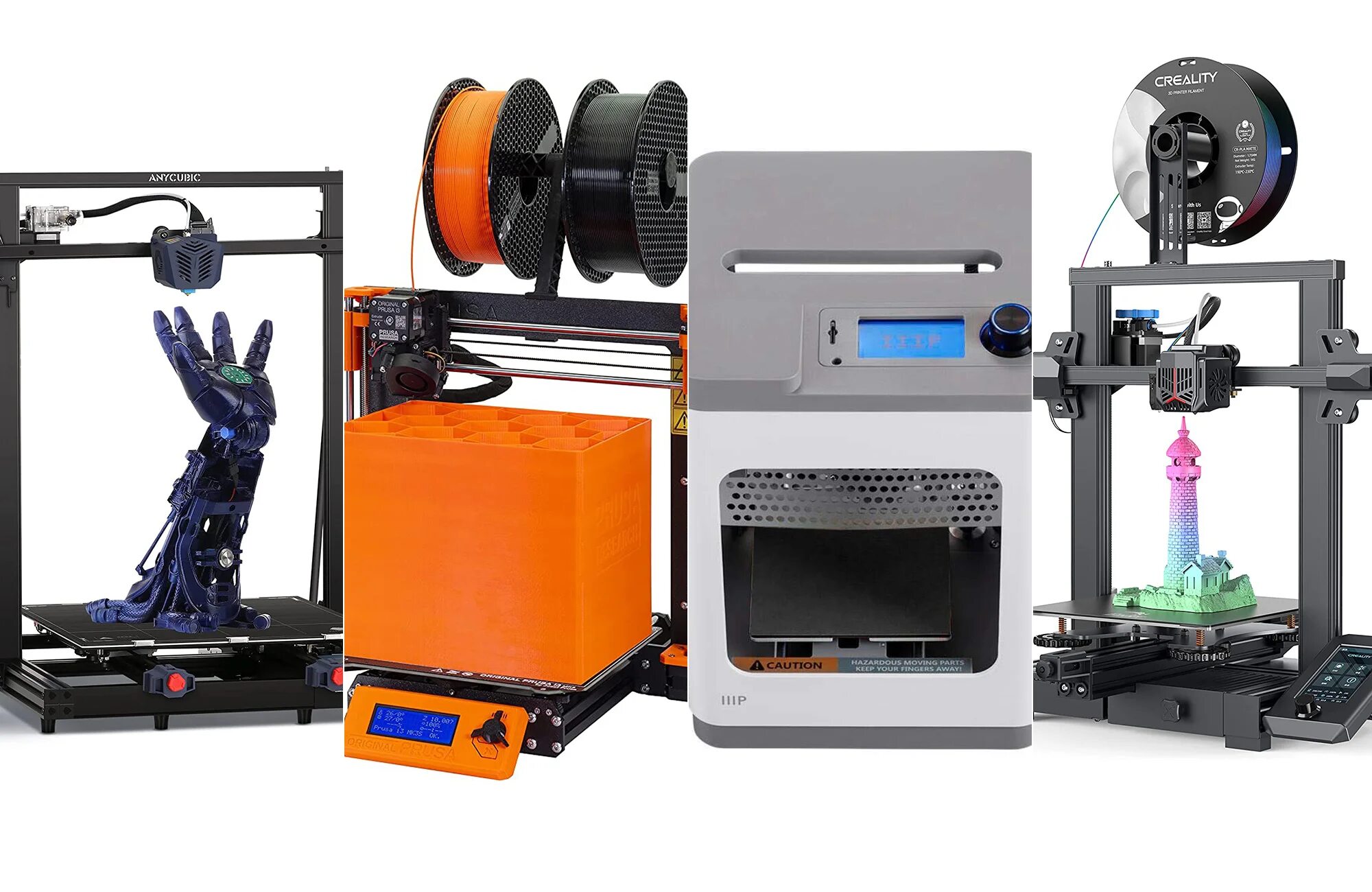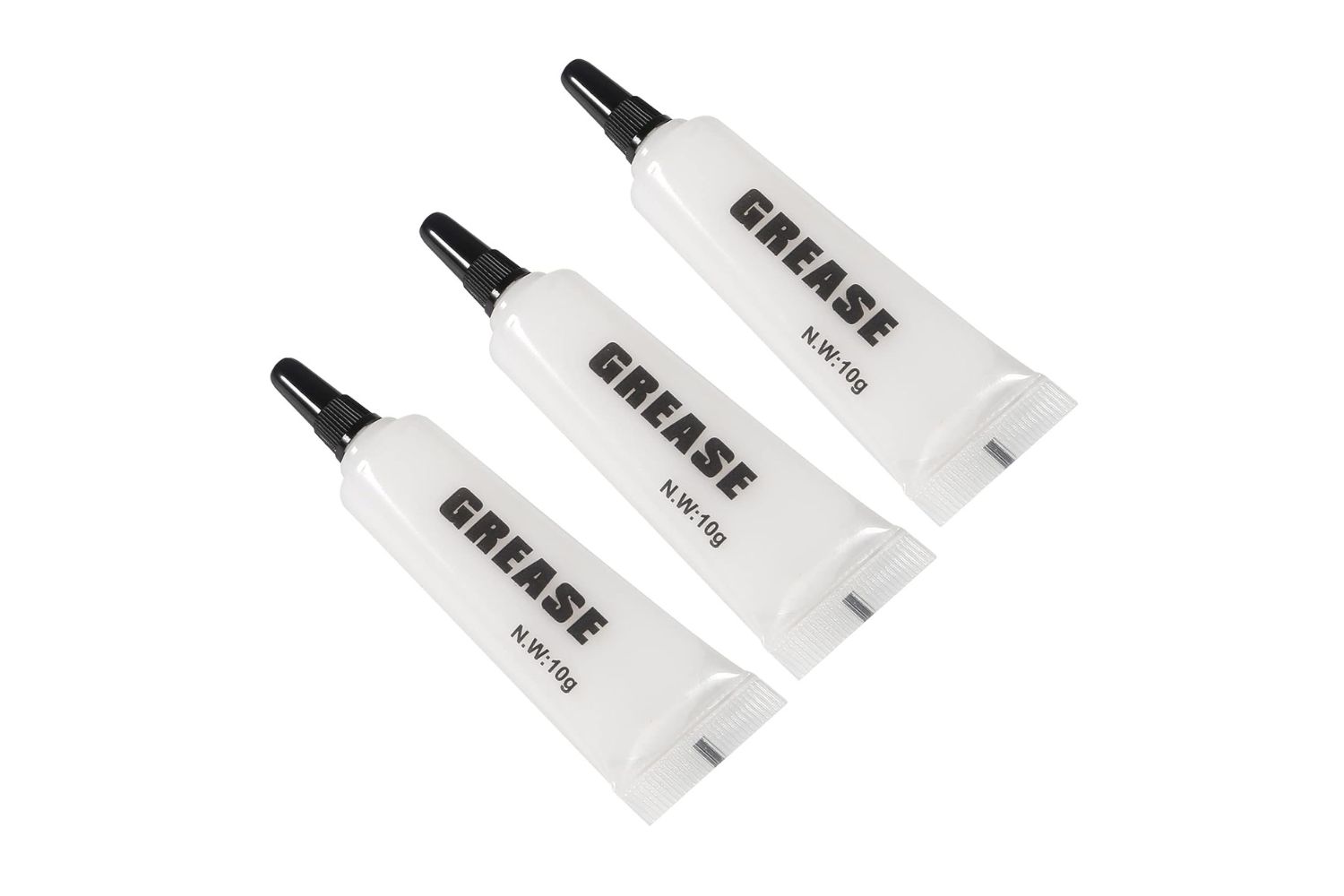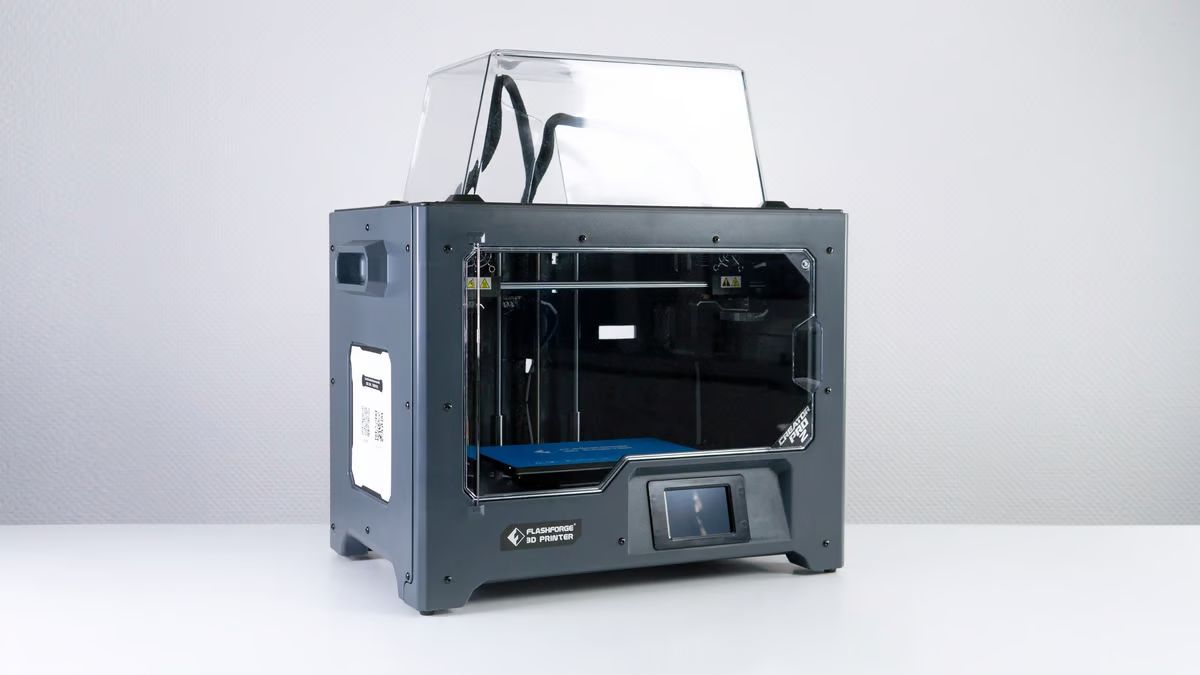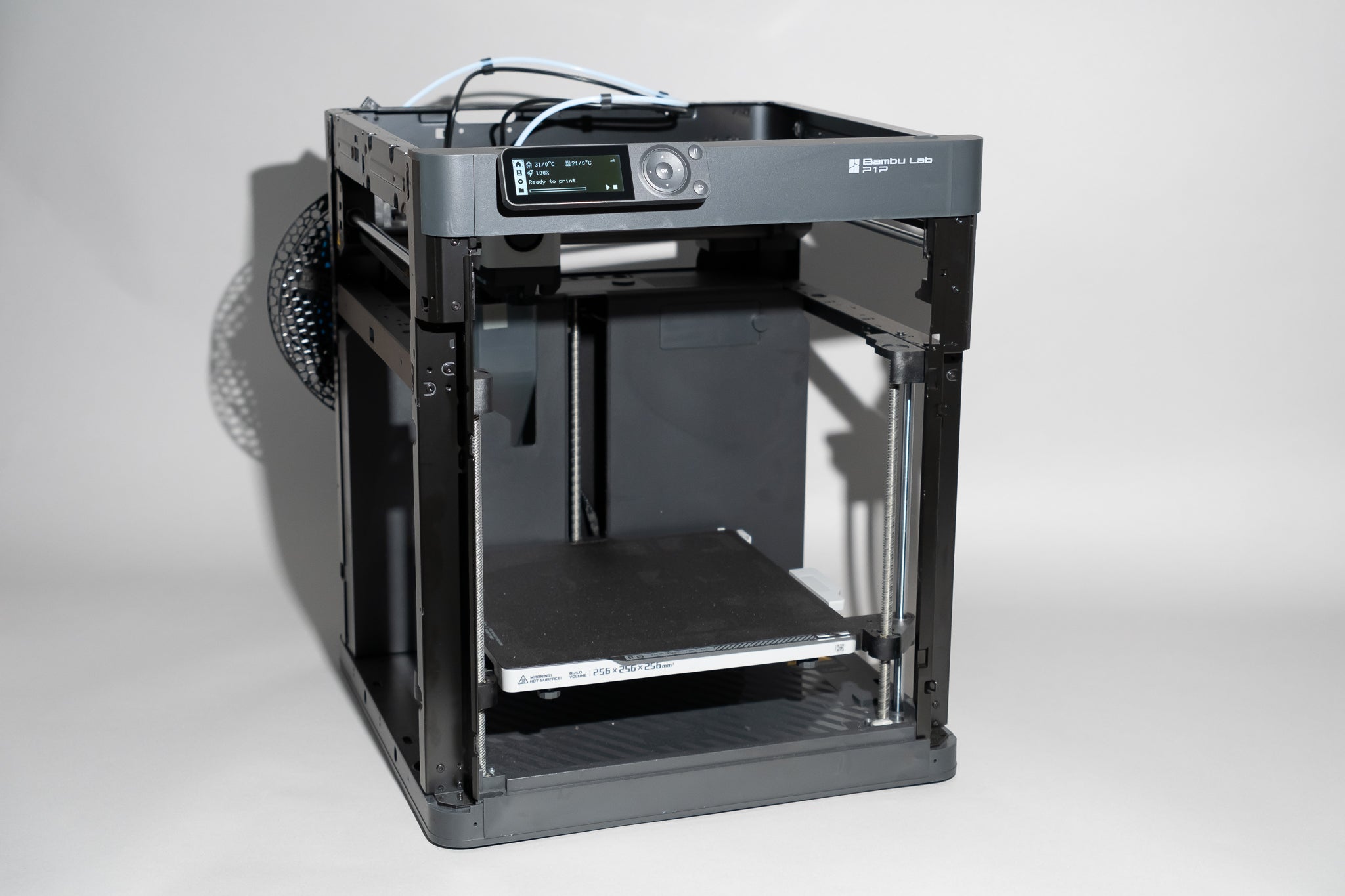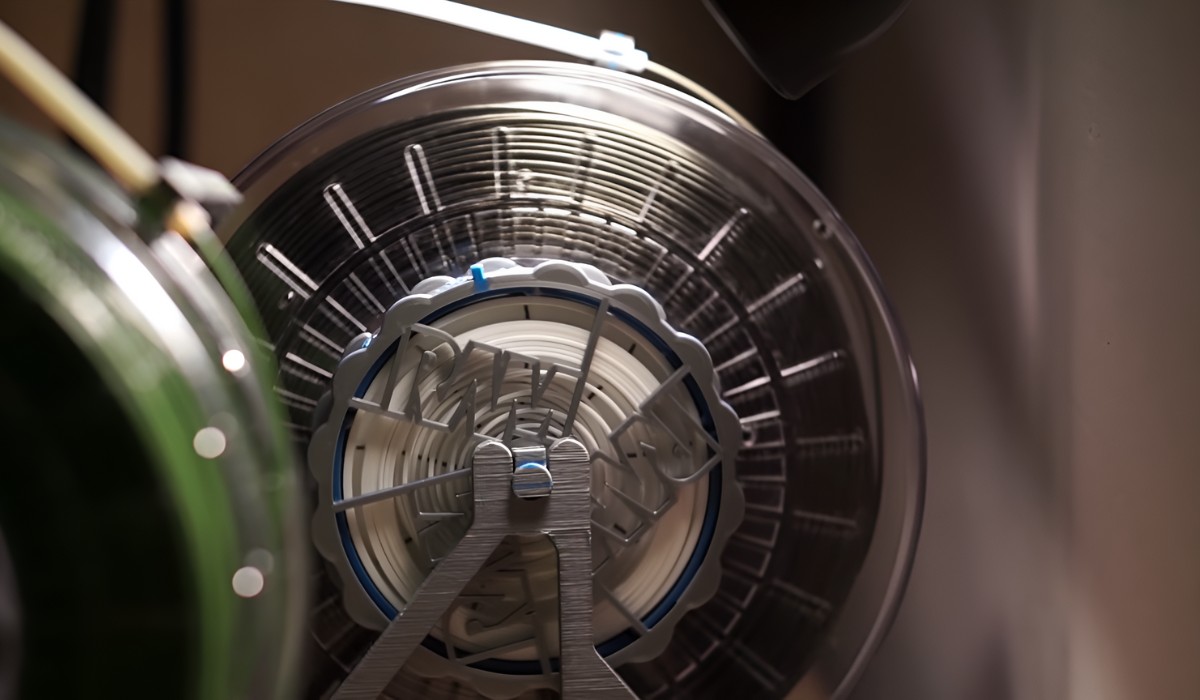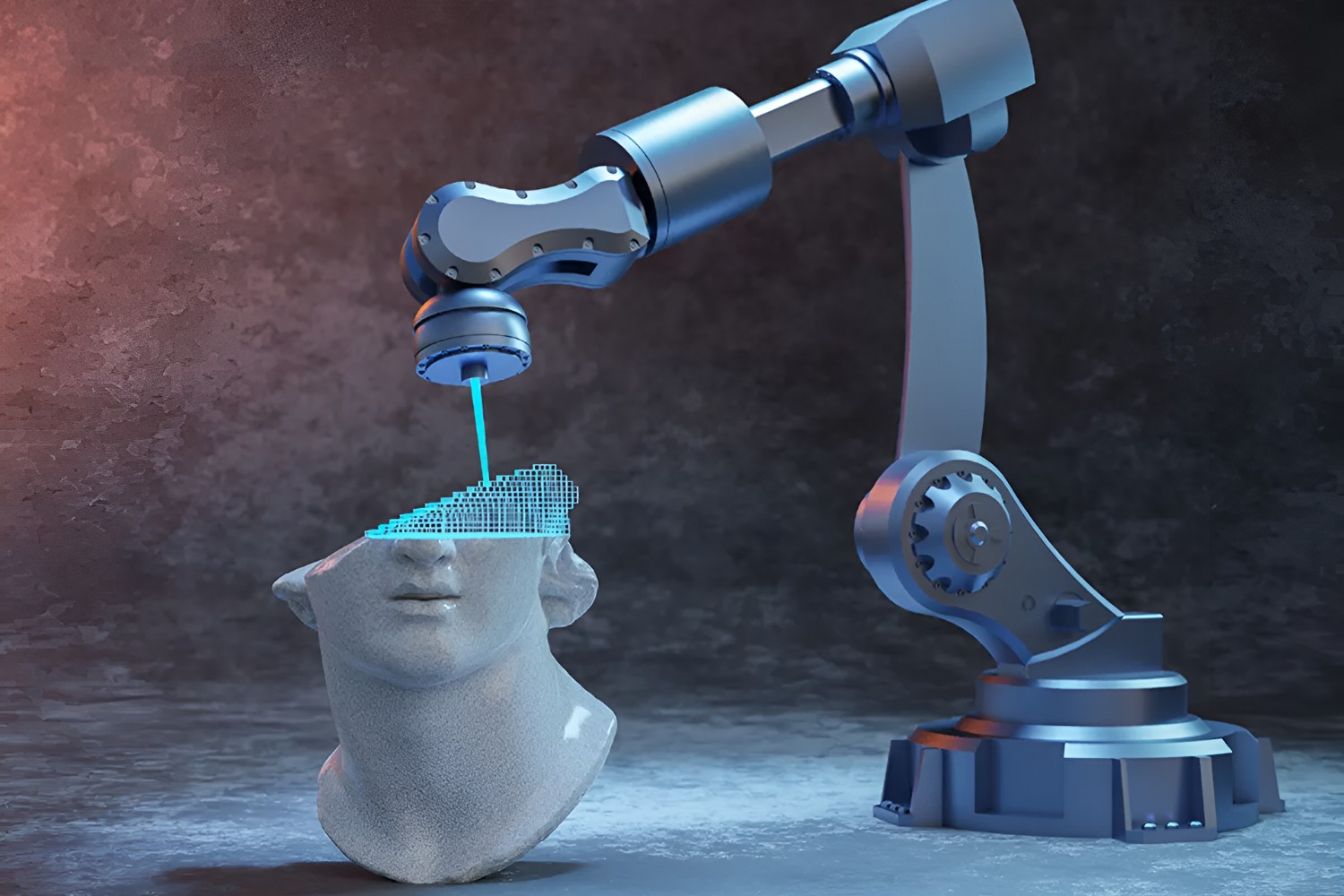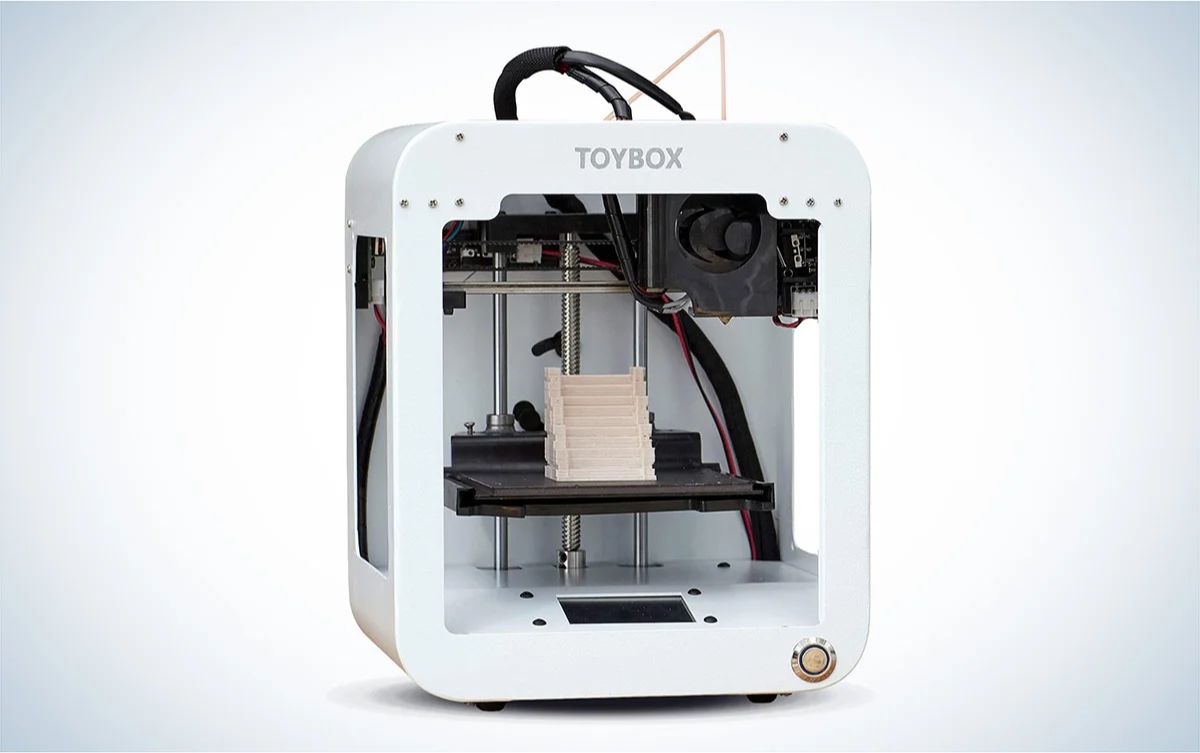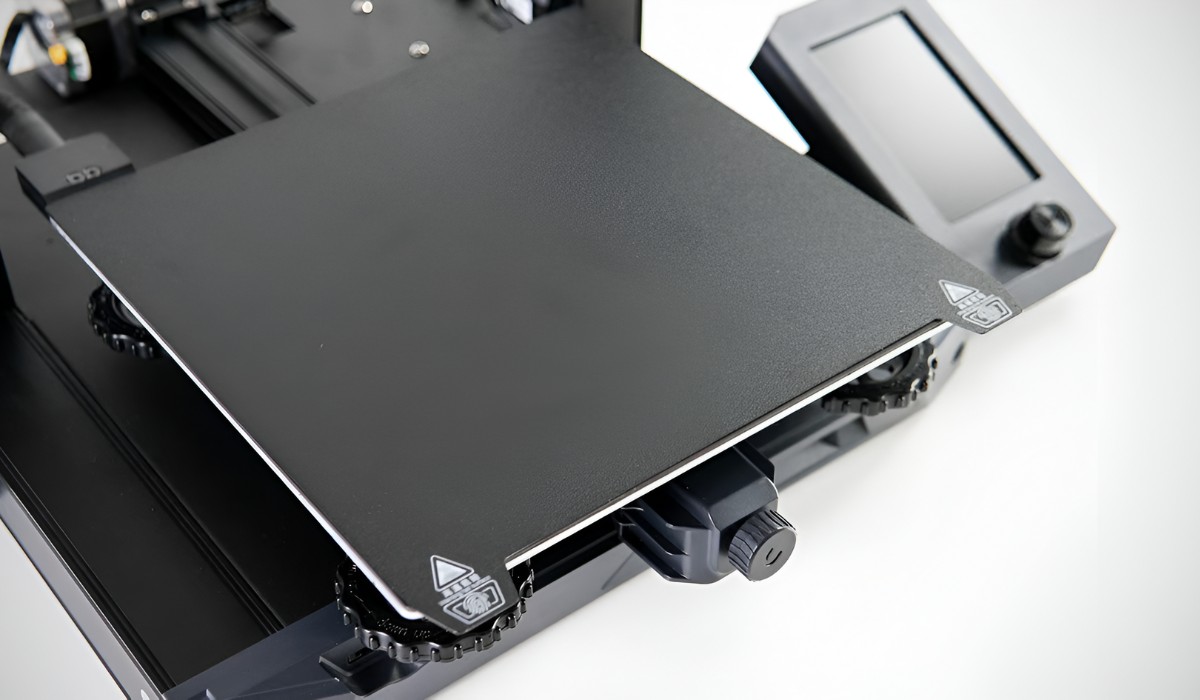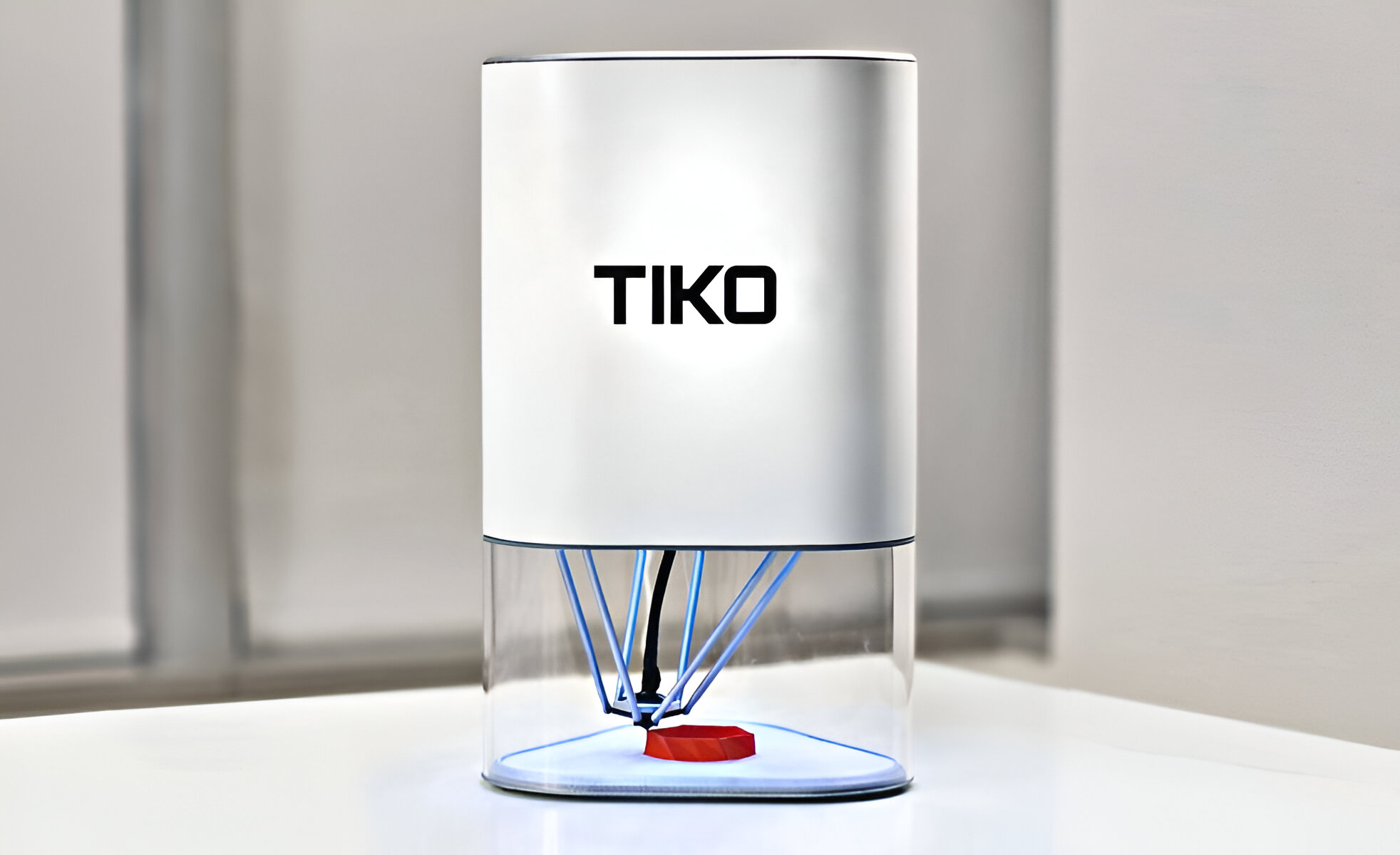Introduction
3D printing, also known as additive manufacturing, is a revolutionary technology that has transformed various industries. It allows for the creation of three-dimensional objects by layering materials on top of each other, based on a digital model. The versatility and accessibility of 3D printers have opened up a world of possibilities, making it applicable in numerous fields. From prototyping to manufacturing, education to healthcare, and even the food and fashion industries, the applications of 3D printing are truly limitless.
One of the primary advantages of 3D printing is its ability to rapidly produce prototypes. In the past, creating prototypes involved time-consuming and costly processes. With 3D printing, designers and engineers can quickly turn their ideas into physical models, allowing them to test and refine their designs at a fraction of the time and cost. This has significantly reduced the product development cycle, enabling businesses to bring innovative products to the market faster.
Moreover, 3D printing has revolutionized the manufacturing industry. Traditional manufacturing methods often involve subtractive processes, where materials are cut away from a larger block. In contrast, 3D printing is an additive process, where materials are built layer by layer. This not only eliminates material waste but also allows for the creation of complex geometries that were previously impossible. This has led to advancements in the production of customized products, such as personalized medical devices and tailor-made consumer goods.
In the field of education, 3D printing has emerged as a powerful tool for hands-on learning. It provides students with the opportunity to bring their ideas to life and engage in experiential learning. Whether used in science, technology, engineering, or art classes, 3D printing enables students to visualize abstract concepts and develop problem-solving skills. It encourages creativity, critical thinking, and collaboration, preparing students for the demands of the future workforce.
Beyond education, 3D printing has made significant strides in the medical and healthcare sectors. It has revolutionized the production of prosthetics, allowing for custom-fitted and affordable devices. Surgeons and dentists can also benefit from 3D-printed models that aid in surgical planning and practice. The ability to create patient-specific implants and tissues holds immense potential for regenerative medicine and organ transplantation.
The aerospace and defense industries have also adopted 3D printing to streamline their manufacturing processes. It enables the production of lightweight components, reducing the weight of aircraft and spacecraft, which in turn reduces fuel consumption. Furthermore, 3D printing allows for rapid prototyping, enhancing the design and functionality of aerospace and defense systems.
Architects and construction professionals are embracing 3D printing to innovate in their respective fields. It offers a cost-effective and efficient way to construct intricate architectural models, allowing clients and stakeholders to visualize proposed designs. Large-scale 3D printers can also create building components, such as walls and facades, using sustainable materials. This has the potential to revolutionize the construction industry, making it more sustainable and customizable.
In the automotive industry, 3D printing has enabled the production of complex and lightweight components. It has also facilitated rapid prototyping, reducing the time and cost involved in designing and testing new vehicle models. Additionally, 3D printing has paved the way for customized automotive accessories, allowing car enthusiasts to personalize their vehicles.
The food industry has not been left behind in the 3D printing revolution. Chefs and food scientists are exploring the use of 3D printers to create unique culinary experiences. With the ability to print intricate designs and shapes, 3D food printing opens up new possibilities for customization and presentation. It also has the potential to address issues such as food waste and nutrition customization for individuals with specific dietary needs.
The fashion industry is also embracing 3D printing to push the boundaries of design and manufacturing. Fashion designers are using 3D printers to create avant-garde garments, accessories, and footwear that defy traditional manufacturing techniques. 3D printing allows for intricate and complex designs that were previously unattainable, enabling designers to experiment and innovate in the world of fashion.
Beyond professional applications, 3D printing has become increasingly popular among hobbyists and DIY enthusiasts. With affordable desktop 3D printers, individuals can bring their creative ideas to life. From prototyping inventions to crafting personalized gifts, 3D printing provides a new dimension of creativity and self-expression.
Prototyping
One of the key applications of 3D printing is in the field of prototyping. Traditionally, creating prototypes involved a lengthy and costly process. Designers and engineers had to rely on specialized tools and materials, often requiring outsourcing to external vendors. However, 3D printing has revolutionized prototyping by enabling rapid and cost-effective creation of physical models.
With 3D printing, designers can turn their digital designs into tangible objects within a matter of hours or even minutes. This allows for quick iteration and refinement of designs, leading to faster product development cycles. Whether it’s testing the functionality of a product, evaluating its ergonomic features, or assessing its visual appeal, 3D printing provides an invaluable tool for prototyping.
The versatility of 3D printing allows for the creation of prototypes using various materials, including plastics, metals, and even flexible materials. This enables designers to simulate the properties of the final product more accurately. For example, in the automotive industry, 3D printed prototypes can mimic the strength and durability of actual vehicle components, helping engineers to fine-tune designs before moving on to mass production.
Another advantage of 3D printing in prototyping is the ability to produce complex geometries that would be challenging or impossible to achieve using traditional manufacturing methods. Conventional techniques often require processes such as milling or molding, which have limitations when it comes to intricate shapes and details. 3D printing, on the other hand, allows for the creation of intricate and precise prototypes, giving designers the freedom to explore creative and innovative designs.
Furthermore, 3D printing also offers cost savings in the prototyping process. Traditional prototyping methods may involve expensive tooling, specialized equipment, and skilled labor. With 3D printing, the need for costly tooling is eliminated, as objects are built layer by layer directly from a digital model. This makes prototyping more accessible to small businesses and startups, enabling them to compete with larger companies in terms of innovation and speed to market.
In summary, 3D printing has revolutionized the prototyping process by providing designers and engineers with a fast, cost-effective, and versatile method to create physical models. It allows for quick iteration, customization, and complex geometries that were previously challenging to achieve. With 3D printing, companies can speed up their product development cycles, reduce costs, and bring innovative designs to the market more efficiently than ever before.
Manufacturing
The impact of 3D printing on the manufacturing industry has been significant. This technology has introduced a new era of additive manufacturing where objects are built layer by layer, revolutionizing the traditional subtractive manufacturing processes. 3D printing offers numerous advantages that make it a game-changer in the manufacturing sector.
One of the key benefits of 3D printing in manufacturing is the ability to produce highly complex and intricate components. Traditional manufacturing techniques often have limitations when it comes to creating complex geometries, leading to design constraints. With 3D printing, designers have more freedom to create intricate and custom-shaped parts, resulting in innovative and unique products that were previously unattainable.
Additionally, 3D printing allows for on-demand manufacturing, which eliminates the need for large-scale production and warehousing. Instead of producing and storing large quantities of inventory, companies can simply print products as needed. This reduces cost and minimizes the risks associated with overproduction and obsolete inventory.
Furthermore, 3D printing provides a more sustainable manufacturing approach. Traditional manufacturing methods often generate a significant amount of waste through subtractive processes, where excess materials are cut away. On the other hand, 3D printing is an additive process that only uses the necessary amount of materials, reducing waste and promoting sustainability. It also enables the use of recycled materials, further minimizing the environmental impact of manufacturing.
The ability to create customized products is another advantage offered by 3D printing. With traditional manufacturing, customization often comes with high costs and long lead times. However, 3D printing allows for the production of personalized and tailor-made items at a relatively low cost and with shorter lead times. This is particularly beneficial in industries such as healthcare, where customized medical devices and prosthetics can greatly improve patient outcomes.
Moreover, 3D printing enables the manufacturing of prototypes and small-batch productions without the need for expensive tooling and molds. This reduces upfront costs and enables small businesses and startups to bring their products to market faster and more affordably. It also allows for rapid product iteration and design improvements, giving manufacturers a competitive edge in terms of innovation and speed.
It is important to note that while 3D printing offers numerous advantages in manufacturing, there are still limitations that need to be considered. Producing large-scale quantities and achieving the same production speeds as traditional methods can be a challenge. Additionally, the material choices and quality may still be limited compared to traditional manufacturing processes. Nevertheless, the continuous advancements in 3D printing technology are steadily addressing these limitations, making it an increasingly viable option for manufacturing.
In summary, 3D printing has revolutionized the manufacturing industry, offering benefits such as the ability to create complex components, on-demand production, sustainability, customization, and cost-effective prototyping. While it may not completely replace traditional manufacturing methods, 3D printing has undoubtedly transformed the way products are made, opening up new possibilities for innovation, efficiency, and sustainability in manufacturing processes.
Education
3D printing has emerged as a powerful tool in education, transforming the way students learn and engage with various subjects. This technology provides a hands-on and interactive learning experience that goes beyond traditional classroom methods. Whether it’s teaching STEM concepts or sparking creativity in the arts, 3D printing has found its place in classrooms at all levels, from primary school to universities.
One of the key advantages of 3D printing in education is its ability to bring abstract concepts to life. Students can take a digital design and turn it into a physical object, allowing them to grasp complex ideas more easily. For example, in science classes, students can print 3D models of molecules or organs, enabling them to visualize and understand the intricacies of biological structures. In mathematics, students can create geometric shapes and manipulate them to explore mathematical concepts in a tangible way.
Moreover, 3D printing encourages problem-solving and critical thinking skills. Students are required to design their objects, analyze their designs for potential improvements, and troubleshoot any issues they may face during the printing process. This fosters creativity, innovation, and a deep understanding of technical principles – essential skills for success in the modern world.
In addition to STEM subjects, 3D printing has also created opportunities for artistic exploration in education. Students can bring their artistic visions to life by printing sculptures, jewelry, or other intricate designs. This allows for self-expression, experimentation, and the integration of art and technology. It bridges the gap between creativity and technical skills, inspiring students to think outside the box and explore new avenues of artistic expression.
Furthermore, 3D printing encourages collaboration and teamwork. Students can work together to design and print objects, fostering communication, problem-solving, and negotiation skills. They learn to share ideas, contribute to group projects, and appreciate the benefits of working collectively towards a common goal.
The accessibility of 3D printing technology has also made a significant impact in education. With the availability of affordable desktop 3D printers, schools can provide hands-on experiences to students, regardless of their geographical location or financial constraints. This levels the playing field and promotes equity in education, ensuring that every student has the opportunity to learn and engage with 3D printing technology.
Moreover, 3D printing encourages interdisciplinary learning. It allows for the integration of various subjects, such as science, technology, engineering, arts, and mathematics (STEAM). Students can explore the connections between these disciplines and how they relate to the real world. This interdisciplinary approach enhances critical thinking, problem-solving, and creativity, preparing students for the demands of the future workforce, which values multidisciplinary skills and a holistic understanding of complex challenges.
In summary, 3D printing has revolutionized education by providing students with hands-on learning experiences, fostering critical thinking and problem-solving skills, promoting collaboration and interdisciplinary learning, and bridging the gap between abstract concepts and tangible objects. As 3D printing technology continues to advance and become more accessible, it holds immense potential to transform education, empowering the next generation of learners with valuable skills and knowledge for the future.
Art and Design
3D printing has revolutionized the world of art and design, offering new possibilities and pushing the boundaries of creativity. Artists and designers are embracing this technology to create intricate and unique pieces that were previously unattainable using traditional methods. From sculptures to jewelry, 3D printing has opened up a whole new dimension for artistic expression.
One of the primary advantages of 3D printing in art and design is the ability to create complex and intricate structures. Traditional manufacturing techniques often have limitations when it comes to creating highly detailed and intricate designs. With 3D printing, artists and designers can bring their visions to life, with the ability to produce intricate geometric forms, delicate textures, and intricate patterns. This allows for a level of creative freedom that was previously unimaginable.
Additionally, 3D printing enables artists and designers to easily experiment with different materials. From plastics to metals, ceramics to glass, and even bio-based materials, 3D printing allows for the exploration of a wide range of materials and their unique properties. This opens up new avenues for artistic expression, allowing artists to push the boundaries of traditional materials and create innovative and compelling artworks.
Moreover, 3D printing allows for customization and personalization in art and design. Artists can create pieces that are tailored to specific individuals or reflect their unique preferences. This level of customization can range from personalized jewelry, where the wearer’s initials or birthstone can be incorporated into the design, to large-scale sculptures that can be customized to fit a specific space or environment. This offers a new level of engagement and connection between the artwork and the viewer.
3D printing also offers a platform for collaborative art and design projects. Artists and designers can collaborate with engineers, scientists, and other creative professionals to explore the intersection of art and technology. These collaborations can result in groundbreaking artworks that combine artistic aesthetics with technological innovation, creating immersive and interactive experiences for the audience.
Furthermore, 3D printing has made art and design more accessible to a wider audience. Affordable desktop 3D printers have empowered artists and designers to create their work without the need for expensive equipment or access to specialized manufacturing facilities. This democratization of the creative process has resulted in a flourishing community of artists and designers who are embracing 3D printing as a tool for self-expression and creativity.
In summary, 3D printing has transformed the art and design landscape by enabling the creation of intricate and customized pieces, pushing the boundaries of traditional materials, facilitating collaboration and experimentation, and making art and design more accessible to a wider audience. As the technology continues to advance, it holds immense potential for further innovation and exploration in the realm of artistic expression.
Medical and Healthcare
3D printing technology has revolutionized the field of medicine and healthcare, offering numerous applications that have the potential to improve patient outcomes and transform healthcare practices. From personalized medical devices to surgical planning aids, 3D printing is making a profound impact in various areas of healthcare.
One of the significant applications of 3D printing in healthcare is the production of customized medical devices and implants. Traditional manufacturing methods often have limitations when it comes to creating personalized patient-specific devices. However, with 3D printing, it is possible to create implants and prosthetics that are tailored to the individual’s anatomy. This enables better fit, improved functionality, and enhanced patient comfort. Examples include 3D-printed prosthetic limbs, dental implants, and patient-specific orthopedic implants.
In addition to personalized implants, 3D printing allows for the creation of patient-specific models and surgical guides. Surgeons can use 3D-printed models of an individual’s anatomy to practice complex procedures and plan surgeries with greater precision. This enhances surgical outcomes, reduces operating time, and minimizes the risk of complications. Surgical guides, which are created based on the patient’s unique anatomy, provide a roadmap for surgeons during procedures, ensuring accuracy and efficiency.
3D printing also has the potential to revolutionize the field of regenerative medicine. Researchers are exploring the use of 3D printing to create scaffolds or frameworks that mimic the structure of human tissues and organs. These scaffolds can be used to support the growth of cells and tissues, facilitating the regeneration of damaged or diseased organs. This field, known as bioprinting, holds immense potential for organ transplantation and tissue engineering.
Furthermore, 3D printing technology enables the production of anatomical models for medical education and training. Medical students can use 3D-printed models to study human anatomy in a realistic and hands-on way. These models provide a tangible and accurate representation of complex anatomical structures, enhancing learning and understanding. They can also be used as educational tools for patients, helping them better understand their own conditions and treatment plans.
Additionally, the accessibility and affordability of 3D printers have empowered healthcare providers to create customized assistive devices and aids. This includes items such as prosthetic limbs, braces, and ergonomic tools. 3D printing allows for rapid prototyping and customization, ensuring that these devices are tailored to the specific needs and preferences of the individual. This not only improves the functionality and comfort of these devices but also reduces the cost and waiting time associated with traditional manufacturing methods.
In summary, 3D printing is revolutionizing healthcare by enabling the production of personalized medical devices, patient-specific models, and surgical guides. It offers new possibilities for regenerative medicine and tissue engineering, as well as enhancing medical education and training. The accessibility and affordability of 3D printers are also improving the accessibility of specialized healthcare devices and aids. With ongoing advancements in 3D printing technology, the future of healthcare holds immense potential for customization, efficiency, and improved patient care.
Aerospace and Defense
The aerospace and defense industries have embraced 3D printing technology as a game-changer in the manufacturing and production of components, tools, and prototypes. 3D printing, also known as additive manufacturing, offers various benefits that have reshaped these industries and elevated their capabilities to new heights.
One of the significant advantages of 3D printing in aerospace and defense is the ability to produce lightweight and complex components. Weight reduction is crucial in aerospace as it directly impacts fuel efficiency and overall performance of aircraft and spacecraft. 3D printing allows for the creation of intricate geometries and internal structures that can reduce weight while maintaining strength and integrity. This has led to improved fuel efficiency, reduced emissions, and enhanced flight range.
Additionally, 3D printing offers rapid prototyping capabilities that facilitate the development and testing of new designs. Traditionally, creating complex prototypes required extensive machining or moulding processes, which were time-consuming and costly. With 3D printing, designers can quickly and cost-effectively produce physical prototypes, resulting in faster design iterations and reducing time to market. This enables aerospace and defense companies to innovate at a faster pace and bring new products to market more efficiently.
Furthermore, 3D printing technology provides the capability to create on-demand spare parts. In the aerospace and defense industries, maintaining a large inventory of spare parts is not only costly but also challenging due to the extensive range of components involved. With 3D printing, parts can be produced on-site or on-demand, reducing the need for large inventories and minimizing downtime. This allows for a more agile and responsive supply chain, ensuring aircraft and defense systems operate at peak efficiency.
Additionally, 3D printing enables the production of custom and specialized tools, fixtures, and jigs that are used in aerospace manufacturing and maintenance processes. These tools can be designed and printed based on specific requirements, improving efficiency, ergonomics, and precision. With 3D printing, the design and production of these tools can be done internally, saving time and cost associated with outsourcing or custom fabrication.
Moreover, additive manufacturing has the potential to revolutionize the development of intricate and optimized internal structures, such as fuel nozzles and cooling channels. By leveraging 3D printing, complex internal geometries can be created that allow for enhanced functionality and performance in engines and other critical components. This leads to improved efficiency, reduced weight, and increased overall performance in aerospace and defense systems.
The adoption of 3D printing in aerospace and defense also contributes to sustainability efforts. By reducing material waste through additive manufacturing, environmental impact is minimized. Furthermore, the ability to produce lighter components directly correlates to reduced fuel consumption and carbon emissions, making the industry more environmentally friendly.
In summary, 3D printing has brought unprecedented benefits to the aerospace and defense industries. From lightweight and complex component production to rapid prototyping, on-demand spare parts, and customized tools, 3D printing has significantly improved efficiency, reduced costs, and accelerated innovation in these sectors. As the technology continues to advance, the potential for further enhancements and breakthroughs in aerospace and defense is immense.
Architecture and Construction
3D printing, also known as additive manufacturing, has transformed the field of architecture and construction, offering new possibilities and innovations in design, construction processes, and sustainability. This technology has the potential to revolutionize the way we build and create structures, from small-scale architectural models to large-scale construction projects.
One of the key advantages of 3D printing in architecture and construction is the ability to create complex and intricate designs with relative ease. Traditional construction methods often involve manual labor and can be limited by the shapes and forms that can be achieved. With 3D printing, architects and designers can create elaborate and unique structures that were previously challenging or impossible to construct. This allows for greater creativity and innovation in architectural design.
Additionally, 3D printing offers the opportunity for cost-effective and sustainable construction. By using additive manufacturing techniques, less material waste is generated compared to traditional construction methods, where excess materials are often discarded. Additionally, 3D printing can utilize sustainable and recycled materials, reducing the environmental impact of building projects. This makes 3D printing a compelling solution for sustainable and eco-friendly construction practices.
Furthermore, 3D printing allows architects and designers to create accurate and detailed architectural models. These models help communicate design concepts to clients, stakeholders, and construction teams. With 3D-printed models, it becomes easier to visualize and understand the spatial dimensions, proportions, and aesthetic qualities of a design. This improves the decision-making process and ensures that design intent is effectively conveyed.
In addition to architectural models, 3D printing can also be used to produce components and elements of a building. Large-scale 3D printers can create walls, partitions, facades, and other structural elements, saving time and cost compared to traditional construction methods. Moreover, 3D printing allows for the fabrication of intricate and customizable details, such as decorative accents and patterns, allowing for unique and personalized architectural features.
3D printing is particularly advantageous in the construction of complex forms or geometrically intricate structures. By using 3D printing, architects and engineers can create buildings with unconventional shapes, curves, and internal structures that would be difficult, if not impossible, to achieve using traditional construction methods. This opens up new possibilities for innovative and groundbreaking architectural designs.
Additionally, 3D printing enables faster construction times, as it eliminates the need for manual labor and time-consuming processes. Construction components can be produced off-site and then assembled on-site, reducing construction time and enhancing efficiency. This is particularly beneficial in emergency situations or areas with limited resources, where rapid and efficient construction is necessary.
In summary, 3D printing has revolutionized the architecture and construction industries by enabling the creation of complex and innovative designs, reducing material waste, facilitating accurate architectural models, and expediting construction processes. With its potential for sustainable practices and limitless creative possibilities, 3D printing is transforming the way architects and designers approach building projects, paving the way for a more efficient, sustainable, and aesthetically inspiring future of architecture and construction.
Automotive Industry
The automotive industry has embraced 3D printing as a transformative technology that is revolutionizing the design, manufacturing, and customization of vehicles. From rapid prototyping to the production of complex components, 3D printing is reshaping the way cars are made and pushing the boundaries of innovation in the automotive sector.
One of the significant advantages of 3D printing in the automotive industry is the ability to produce complex and lightweight components. Traditional manufacturing methods often involve subtractive processes, where excess material is cut away from a larger block. With 3D printing, components can be built layer by layer, allowing for intricate and precise designs that reduce weight while maintaining strength and functionality. This not only enhances fuel efficiency but also improves performance and agility in vehicles.
Furthermore, 3D printing enables rapid prototyping in car design and development. Designers and engineers can quickly create physical prototypes and test different iterations. This iterative design process allows for faster product development cycles and helps bring new vehicle models to market more efficiently. By using 3D printing for prototyping, automotive companies save time and expenses associated with traditional manufacturing methods, such as tooling and molding.
Another advantage of 3D printing in the automotive industry is the level of customization it offers. With 3D printing, car manufacturers can produce personalized and tailor-made parts, catering to individual customer preferences. This level of customization extends beyond aesthetics to functional components, allowing customers to modify and upgrade their vehicles based on specific needs. Customization adds value and personalization to the driving experience, giving customers the opportunity to own unique and one-of-a-kind vehicles.
3D printing also provides cost savings in the production of spare parts. Rather than maintaining a large inventory of specialized parts, automotive companies can use 3D printing to produce parts on-demand. This reduces storage costs and eliminates the risk of obsolete inventory. Moreover, 3D printing allows for the production of discontinued or hard-to-find parts, prolonging the lifespan of older vehicle models and providing a more sustainable solution.
Additionally, 3D printing plays a significant role in the development of innovative features and advancements in automotive technology. With 3D printing, intricate sensors, electrical components, and integrated systems can be printed directly into vehicle parts, reducing the need for separate assembly processes. This enables the integration of smart and connected features, enhancing safety, performance, and user experience in cars.
It is important to note that while 3D printing offers numerous benefits in the automotive industry, there are still limitations to consider. Large-scale production and achieving the same production speeds as traditional methods can be a challenge. Additionally, material choices and quality may still be limited compared to conventional manufacturing processes. However, ongoing advancements in 3D printing technology and materials are continuously addressing these limitations, making it an increasingly viable option for the automotive industry.
In summary, 3D printing is revolutionizing the automotive industry by enabling the production of complex and lightweight components, facilitating rapid prototyping, offering customization options, providing cost-effective spare parts production, and driving innovation in automotive technology. As the technology continues to advance, the potential for further advancements in design, manufacturing, and customization in the automotive industry is immense, shaping the future of mobility and transportation.
Food Industry
3D printing has made a significant impact in the food industry, revolutionizing the way we create and present culinary experiences. With the ability to print intricate designs and shapes, 3D food printing has opened up new possibilities for customization, presentation, and innovation in food production.
One of the significant applications of 3D printing in the food industry is the creation of unique and personalized culinary experiences. Chefs and food scientists can use 3D printers to design and print intricate patterns, shapes, and textures that would be challenging or impossible to achieve using traditional methods. This allows for a new level of creativity and artistic expression in food presentation, elevating the dining experience for customers.
Additionally, 3D printing allows for customization in food production. Personalized food options are becoming increasingly popular as people have specific dietary needs or preferences. 3D printing enables the creation of customized food items that cater to these individual requirements. Whether it’s adjusting portion sizes, accommodating dietary restrictions, or creating personalized flavors and textures, 3D food printing offers a level of customization that caters to the unique needs of each consumer.
Furthermore, 3D printing technology enables the production of intricate and complex food structures. This includes creating delicate sugar sculptures, intricate chocolate patterns, or even constructing multi-layered food items. The precision and accuracy of 3D printing allow chefs and food professionals to experiment with new and innovative culinary creations, pushing the boundaries of traditional food presentation and design.
3D printing also has the potential to address challenges in the food industry, such as food waste and nutritional customization. With traditional food production, there is often significant waste generated from trimming, shaping, and peeling food items. 3D printing can more efficiently utilize ingredients, creating minimal waste by printing precise amounts of food. Moreover, 3D printing technology enables the customization of nutritional content, allowing for the creation of personalized meals that align with specific dietary requirements or preferences.
Another benefit of 3D printing in the food industry is the potential for automation and efficiency. In high-demand environments, such as large-scale catering or food production, 3D printing can streamline processes and reduce labor costs. Automated 3D food printers can produce consistent and intricate designs, reducing the time and effort required for manual food preparation. This can enhance productivity and scalability in the food industry.
It is important to note that while 3D printing offers significant advantages in the food industry, there are still challenges and limitations to consider. The range of printable food materials and flavors is currently limited compared to traditional ingredients. Additionally, the speed of 3D food printing may not be suitable for high-volume production. However, ongoing research and advancements in 3D printing technology are continually addressing these limitations, making it an increasingly viable option for the food industry.
In summary, 3D printing has transformed the food industry by offering customization, intricate designs, reduced food waste, nutritional customization, and automation opportunities. As the technology continues to evolve and improve, the potential for further advancements in food production and culinary experiences is immense, shaping the future of the food industry and offering new dimensions of creativity and innovation.
Fashion Industry
3D printing has made a significant impact in the fashion industry, unlocking new possibilities for design, customization, and sustainability. This technology has revolutionized the way garments, accessories, and footwear are created, pushing the boundaries of creativity and innovation in the world of fashion.
One of the key advantages of 3D printing in the fashion industry is the ability to create intricate and complex designs that are not easily achievable using traditional manufacturing processes. Designers can leverage 3D printing to produce garments with intricate patterns, unique textures, and innovative structures. This opens up a new realm of creative possibilities, allowing designers to experiment, push boundaries, and create avant-garde fashion pieces that defy traditional manufacturing techniques.
Furthermore, 3D printing allows for customization in the fashion industry. With 3D printing technology, designers can create personalized and tailor-made fashion items that are customized to individual body shapes and preferences. This includes creating garments that fit perfectly, accommodating different body sizes, shapes, and proportions. 3D printing offers the opportunity to achieve a higher level of precision and customization in fashion design, resulting in garments that are uniquely fitted to each wearer.
Moreover, 3D printing contributes to the sustainability efforts in the fashion industry. Traditional manufacturing processes often generate a significant amount of textile waste. However, with 3D printing, materials are used more efficiently, minimizing fabric waste. Additionally, 3D printing enables the use of sustainable and biodegradable materials, reducing the environmental impact of fashion production. This promotes eco-friendly practices and supports the move towards a more sustainable and circular fashion economy.
The accessibility of 3D printing technology has also democratized the fashion industry. Designers and independent fashion creators can have direct access to 3D printers, reducing the need for large-scale manufacturing facilities. This allows for greater creativity and innovation at a smaller scale, enabling emerging designers to showcase their talent and participate in the fashion industry without the need for extensive resources. It also provides an avenue for fashion enthusiasts and do-it-yourself (DIY) enthusiasts to create their own custom fashion pieces.
Additionally, 3D printing has the potential to revolutionize the production of footwear. Custom-fit and customizable shoes can be created using 3D printing technology, eliminating the need for standard sizes and offering unparalleled comfort and fit. 3D-printed shoes can be designed based on individual foot scans, resulting in footwear that is tailored to each person’s unique foot shape.
It’s worth noting that while 3D printing offers significant advantages in the fashion industry, there are still some limitations to consider. Large-scale production speeds may not match those of traditional manufacturing methods. Additionally, material choices and quality may have limitations compared to conventional fabrics and materials. However, ongoing advancements in 3D printing technology and material development are continually addressing these limitations, making 3D printing an increasingly viable option for the fashion industry.
In summary, 3D printing has transformed the fashion industry by enabling intricate designs, customization, sustainability, and accessibility. With its potential for creativity, customization, and sustainability, 3D printing is shaping the future of fashion, allowing for innovative and unique designs that cater to individual preferences and needs.
Hobby and DIY Projects
3D printing has become increasingly popular among hobbyists and do-it-yourself (DIY) enthusiasts, opening up a world of creativity and self-expression. With affordable desktop 3D printers becoming more accessible, individuals can bring their imaginative ideas to life and engage in a wide range of hobby and DIY projects.
One of the primary advantages of 3D printing in hobby and DIY projects is the ability to create custom and unique objects. Whether it’s prototyping new inventions, crafting personalized gifts, or designing intricate models, 3D printing offers the freedom to turn digital designs into tangible objects. This level of customization allows hobbyists to bring their creative visions to life with precision and ease.
Additionally, 3D printing is a valuable tool for rapid prototyping in DIY projects. Instead of relying on time-consuming and expensive traditional manufacturing methods, individuals can use 3D printers to quickly produce prototypes of their inventions or designs. This enables efficient iteration and refinement, accelerating the development process and bringing ideas to fruition faster.
Moreover, 3D printing allows hobbyists to explore a wide range of materials in their projects. From various plastics to metals and even flexible materials, 3D printers facilitate experimentation with different material properties and textures. This not only enhances the aesthetics of the final objects but also opens up opportunities for functional creations, such as mechanical parts or artistic sculptures.
Furthermore, 3D printing encourages collaboration and knowledge sharing among DIY enthusiasts. Online communities and platforms provide a space for hobbyists to connect, exchange ideas, and share 3D models. This collaborative environment fosters creativity, problem-solving, and collective learning, empowering individuals to embark on more ambitious projects and push the boundaries of their skills.
The accessibility and affordability of 3D printing have democratized the world of hobbies and DIY projects. Unlike traditional manufacturing processes that require specialized equipment and facilities, 3D printing can be done from the comfort of one’s home. This allows individuals to engage in creative endeavors and pursue their hobbies with greater ease and affordability.
Moreover, 3D printing allows for customization and personalization in hobby and DIY projects. Individuals can design objects that are tailored to their specific needs and preferences. Whether it’s modifying existing designs or creating new ones from scratch, 3D printing enables hobbyists to express their individuality and bring their unique ideas to life.
In summary, 3D printing has revolutionized the world of hobbies and DIY projects by providing affordable access to customizable and creative manufacturing. With its rapid prototyping capabilities, material versatility, collaborative nature, and ease of use, 3D printing has become an indispensable tool for hobbyists and DIY enthusiasts. It fuels creativity, stimulates innovation, and empowers individuals to turn their imagination into reality in their pursuit of fulfilling and rewarding projects.
Conclusion
3D printing has emerged as a revolutionary technology with vast applications across a wide range of industries. From prototyping to manufacturing, education to healthcare, and art to automotive, the versatility and accessibility of 3D printing have transformed the way we create, innovate, and interact with the world around us.
In prototyping, 3D printing has accelerated product development cycles, allowing designers and engineers to turn their ideas into tangible models quickly. This has reduced costs and propelled innovation by enabling rapid iteration and refinement.
In manufacturing, 3D printing has brought about significant advancements in customization, lightweighting, and complex geometries. It has revolutionized the production of personalized medical devices, aerospace components, and automotive parts, leading to improved functionality, enhanced efficiency, and reduced environmental impact.
In education, 3D printing has transformed learning experiences by bridging the gap between abstract concepts and tangible objects. It has fostered creativity, critical thinking, and interdisciplinary learning, preparing students for the challenges of the future workforce.
In the fields of art and design, 3D printing has unleashed new possibilities for intricate and customizable creations, pushing the boundaries of traditional manufacturing methods. It has empowered artists and designers to bring their visions to life with precision and complexity.
In healthcare, 3D printing has revolutionized medical practices, from personalized prosthetics and implants to patient-specific models and surgical guides. It has improved patient outcomes, reduced costs, and paved the way for advancements in regenerative medicine.
In aerospace and defense, 3D printing has optimized manufacturing processes, enabling the production of lightweight and complex components. It has facilitated rapid prototyping, customization, and on-demand spare parts production, supporting innovation and efficiency in these industries.
In architecture and construction, 3D printing has enhanced design possibilities, sustainability, and customization. It has allowed for the creation of intricate architectural models, complex structural components, and sustainable building practices.
In the fashion industry, 3D printing has driven creativity, customization, and sustainable practices. It has introduced intricate designs, personalized garments, and reduced material waste, reshaping the future of fashion.
In the food industry, 3D printing has offered new dimensions of creativity and customization. It has enabled the creation of intricate culinary designs, personalized nutrition, and reduced food waste, revolutionizing the way we experience food.
In hobbies and DIY projects, 3D printing has empowered individuals to unleash their creativity and pursue their passions. It has accelerated prototyping, fostered collaboration, and made manufacturing accessible to a wider audience.
In conclusion, 3D printing continues to redefine industries, empowering innovation, customization, and efficiency across various sectors. With ongoing advancements in technology and materials, the possibilities for 3D printing are boundless, promising an exciting future where creativity and functionality merge for a better world.







